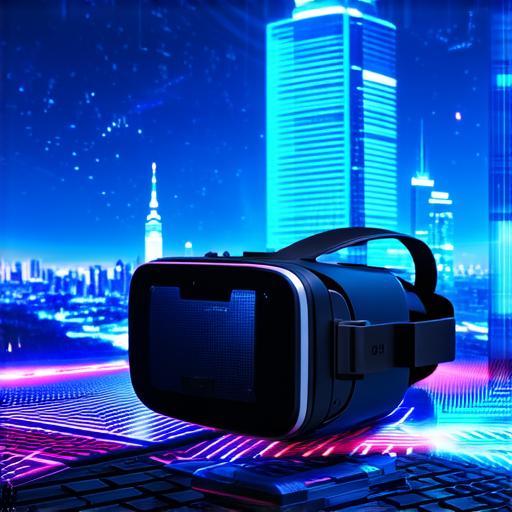
Why virtual reality is the future
Virtual reality (VR) technology has been around for decades, but it’s only in the last few years that it has started to become mainstream. With advancements in both hardware and software, VR has become more accessible, affordable, and immersive than ever before.
Virtual Reality: A Brief History

Virtual reality technology can be traced back to the 1960s, when researchers first started exploring ways to create immersive experiences for users. However, it wasn’t until the early 2000s that VR technology became more accessible and affordable, thanks in part to advancements in computer hardware and software.
One of the earliest examples of VR technology is the Sword of Damocles, developed by Ivan Sutherland in 1968. This system used a head-mounted display to track the user’s movement and create a sense of immersion. However, it was bulky, expensive, and limited in its capabilities.
In more recent years, advancements in VR hardware have made it possible to create more immersive experiences. The Oculus Rift, for example, was released in 2016 and quickly became one of the most popular VR systems on the market. It uses a headset with a high-resolution display and advanced tracking technology to create a highly realistic experience.
The Advantages of Virtual Reality
Virtual reality has many advantages that make it an attractive option for businesses and consumers alike. One of the biggest advantages is the ability to create immersive experiences that are difficult or impossible to replicate in real life. For example, architects can use VR to design and test buildings in a virtual environment before constructing them in the real world. This allows them to make changes and improvements without the risk of costly mistakes.
Another advantage of VR is its ability to enhance learning and training experiences. Medical professionals, for example, can use VR to simulate surgeries and other procedures in a safe and controlled environment. This allows them to practice their skills and improve their performance without putting patients at risk.
Virtual reality can also be used to create highly engaging marketing campaigns. For example, companies can use VR to create virtual product demos that allow customers to interact with products in a more immersive way. This can help to build brand awareness and generate interest in new products.
Virtual Reality: The Future of Business
Virtual reality is already transforming many industries, and it’s likely that we will see even more changes in the coming years. One industry that is likely to be greatly impacted by VR is real estate. With VR, buyers and renters can take virtual tours of properties without ever leaving their homes. This can save time and money for both buyers and sellers, and it can also help to reduce the environmental impact of transportation.
Another industry that is likely to be transformed by VR is manufacturing. With VR, manufacturers can create virtual prototypes of products and test them in a virtual environment before building them in the real world. This can save time and money by reducing the number of physical prototypes that need to be built.
Virtual reality can also be used to enhance customer service experiences. For example, companies can use VR to create virtual help centers that allow customers to interact with support staff in a more immersive way. This can help to reduce frustration and improve customer satisfaction.
Case Studies: Virtual Reality in Action
There are many examples of how virtual reality is being used in business today.


